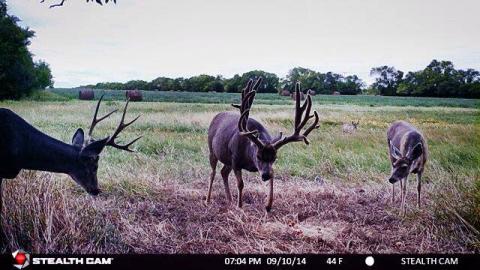Shane Smith

When duck and goose hunters are purchasing steel shot there are a few numbers on the box that we look at, speed and payload. For most, it is velocity or density. Waterfowl hunters are constantly bombarded by ads such as “Speed Kills” or our pattern density “Drops Ducks Like Rain.” So which numbers mean more to you and why? Do you prefer more density or higher velocity?
I am not a physics guy for the most part, but have done a fair amount of research to be informed rather than just opinionated. Many hundreds of years ago a man named Galileo dropped two different sized cannon balls from the Leaning Tower of Pisa, only to find they both hit the ground at the exact same time! Although one weighed twice what the other one did, how did they reach the point of impact simultaneously?
Velocity is essentially independent of gravity. If a round is fired at 100 feet per second and the same round is fired at 1,000 feet per second, and they are on the same plane, they will hit the ground at the exact same time. Crazy right!?
Okay, back to duck load talk. When you are buying 12-gauge steel shot, do you reach for 1 1/8 oz. = 1,550 FPS or 1 1/5 = 1,500 FPS or 1 ¼ = 1450 FPS or 1 /38 = 1,300 FPS?
There are always trade-offs when it comes to speed/density. So if speed truly kills, why has the trend turned back to 1,550 or less? A few years back several shot shell companies were producing speeds of 1,600-1,700 FPS. What people found was these speeds were counterproductive to producing a dense pattern and the right terminal velocity to cleanly harvest waterfowl.

Aftermarket choke tube manufacturers like Pattern Master state that their chokes are to be used with round 1,550 FPS and less to achieve maximum performance.
So, IMO speed isn’t what kills. However, it can change your lead and how you shoot at waterfowl. It may change from pointing at the bird’s beak to having to slightly lead the bird to effectively kill it.
Let’s dive into the nuts and bolts of density from a much less scientific standpoint. Can you throw a fistful of rocks or a fistful of popcorn further? A baseball or whiffleball? All of the above stated objects are leaving your hand at the exact same speed, but the denser an object is, the easier it is to maintain its speed at a further distance. The super-fast shells are often the least dense (popcorn/whiffle) and the slower (rock/baseball).
For me, I prefer the faster rounds for close up areas such as flooded timber, wood duck holes and teal swats. Most of my shots will be up close and personal, so to me the speed benefits me better here much better than out at 50 yards.
Now, in the above listed shot shells, let’s look at the two most popular sizes for weight/# of pellets. 3”+ #2’s + 1 1/8 oz. = 140 pellets. 3”+ #2’s + 1 ¼ oz. = 155 pellets. These pellets are spreading out quickly the further they travel from your barrel. This is why the 1 1/8 oz. shells are typically cheaper than the 1 ¼ shells. I will opt for the 15 extra pellets instead of the 100 FPS.
I reach for the rounds with the more pellets at a slightly slower speed. Typically the 1 ¼ at 1400-1450 FPS will get the nod 90% of the time. This is what I have found what works for ME. I highly encourage you to see what works for you and your weapon set-up. Change chokes and loads to see what you have been missing.
Have you patterned your weapon on paper AND water to see how it patterns and how long it is? If not, you are simply praying and spraying. Set out a milk jug or old leaky deke to see if your shot string is super long or full of holes on the water, instead of only shooting paper.
Hopefully I haven’t muddied the water and made you doubt yourself when you pick up a box of shells. Try a few different rounds this season and see what you have been missing!



























